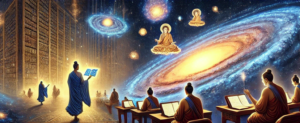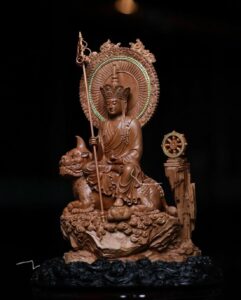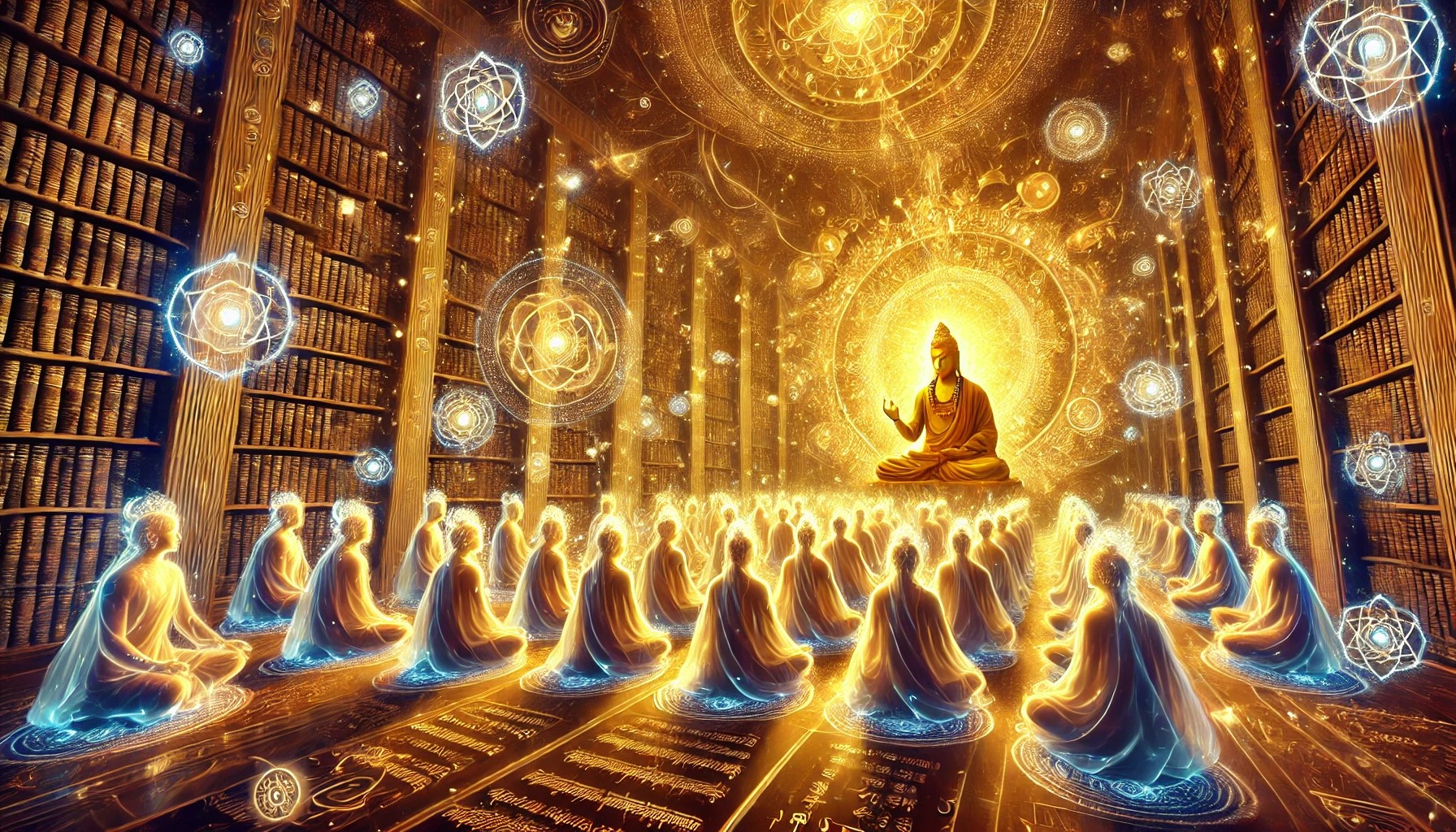Amitabha Buddha Class Notes
1. Longshu’s Journey to the Sky Library

- A monk named Longshu (translated as Dragon Trees) was a Bodhisattva.
- In deep meditation, Longshu travelled to a sky universe, where he visited a sky library that was the size of our universe. It was filled with wisdom detailing every Buddha and Bodhisattva and their path to awakening.
- Siddhartha Buddha accompanied him and allowed Longshu to choose a book to return to Earth to help people gain wisdom.
- Despite the vastness of the library, Siddhartha Buddha advised him to take just the first two books. These would be suitable for humans.
- Longshu returned to Earth, translated these texts, and began teaching them.
2. The Class of Energy Gods and the Nature of Consciousness After Death

- While in the sky library, Longshu witnessed a class of energy gods learning from a Buddha.
- One of the energy gods asked essential questions about:
- What happens after death?
- How does consciousness decide where to go?
- How does karma work?
- Hell Bodhisattva appears to teach:
- After death, consciousness remains in a ‘ghost’ state for about three weeks.
- The consciousness, having been so attached to the body, does not realise it has died and continues acting as if it is still alive.
- This state is just subconscious with no brain consciousness. It is described as being similar to the effects of strong medication, dizziness, and illness.
- During this period, Hell Bodhisattva assists the consciousness by guiding them through nine tests related to greed, kindness, and ego.
- These tests encourage the consciousness to regret past bad karma and transition to a better dimension in the next life.
- A student asked if there was another system besides this. The Buddha introduced the “will system,” explaining that:
- If someone has bowed to Buddhas or Bodhisattvas during their lifetime, they create a spiritual seed.
- This seed directly connects them to that Buddha or Bodhisattva after death.
- Specifically, Amitabha Buddha’s system offers a direct path to rebirth in his Pure Land. If the consciousness has practised sincerely
- Those who sincerely bow to Amitabha Buddha and seek rebirth in his Pure Land will connect to spiritual signs, such as Dharma wheels, lotus, and golden lights, or directly to Buddhas and Bodhisattvas at the time of death.
3. Siddhartha Buddha’s Story of the Drunken Student
- Siddhartha Buddha shared a story about a habitual drunkard who frequently attended his teachings but always behaved rudely and disrespectfully.
- However, during a session where Siddhartha taught about Amitabha Buddha’s system, the drunkard surprisingly became quiet and listened intently.
- The next day, the drunkard was in a temple and accidentally fell over.
- In that moment of falling, he sincerely called out to Amitabha Buddha in his heart, wishing to be reborn in the Pure Land.
- Siddhartha Buddha later explained that this sincere call had created spiritual karma and planted a spiritual seed, setting him toward rebirth in Amitabha’s Pure Land.
Other sources and notes on Amitabha Buddha and Related Teachings
1. Nāgārjuna (Longshu) and His Contributions
- Historical Context: Nāgārjuna, known as Longshu Bodhisattva in Chinese, was a prominent Indian Mahayana Buddhist philosopher. He is traditionally credited with founding the Madhyamaka (Middle Way) school of Mahayana Buddhism.
- Source: Buddha Nature
- Association with Pure Land Teachings: Nāgārjuna emphasized the importance of mindfulness of the Buddha and is associated with Pure Land practices.
- Source: Buddhist Door
2. Amitabha Buddha’s Pure Land and Rebirth Practices
- Pure Land Buddhism: This tradition emphasizes the belief in Amitabha Buddha’s vow to create a Pure Land (Sukhavati) where beings can be reborn and attain enlightenment more readily.
- Source: Wikipedia
- Rebirth Mantras: Practitioners often recite the Amitabha Pure Land Rebirth Dhāraṇī, also known as the Pure Land Rebirth Mantra. This mantra is believed to help reduce bad karma and ensure rebirth in the Western Pure Land.
- Source: Buddha Weekly
- Nianfo Practice: Central to Pure Land Buddhism is the practice of “nianfo,” which involves the continuous recitation of Amitabha Buddha’s name. This practice fosters a deep connection with Amitabha and is believed to lead to rebirth in the Pure Land.
- Source: Wikipedia
3. The Amitāyus Contemplation Sūtra
- Teachings on Rebirth: This sutra outlines methods for attaining rebirth in the Pure Land, including visualization practices and the importance of mindfulness of Amitabha Buddha. It describes the nine levels of birth in the Pure Land, emphasizing that all beings can achieve rebirth there through sincere practice.
- Source: Wikipedia
4. The Role of Faith and Vows
- Aspiration for Rebirth: A key aspect of Pure Land practice is the aspirant’s vow to be reborn in Amitabha’s Pure Land. This aspiration, combined with practices like nianfo, aligns the practitioner’s mind with the qualities of the Pure Land, facilitating rebirth there.
- Source: Pure Land Buddhism
By integrating these elements, your understanding of Amitabha Buddha’s teachings and the practices associated with attaining rebirth in the Pure Land will be more comprehensive.
